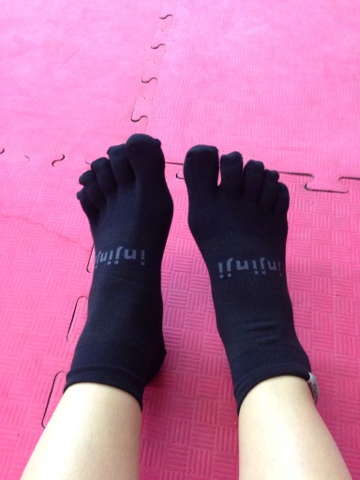Distance: 5.5 miles
Pace: 9:02/mile
Heart rate: 153 BPMs
Pace: 9:02/mile
Heart rate: 153 BPMs
Wine: Small bottle (375 ml) of sake with
sushi last night (I recently discovered how much better cold sake is than the
crappy sake they heat up for sake bombers; I feel so grown up!)
I am writing this on an airplane – yay Southwest WiFi! Husband #1 (yeah, the nickname is sticking)
and I are on our way to New Orleans to celebrate Slo Jo’s birthday. This type of trip is much more difficult for
us since we had kids (in fact, we just realized this is the first time we’ve
flown out of town without kids in tow).
Specifically, yesterday we had to drive 5 hours with the kids to drop
them off in the city where my parents live.
To give my poor sciatic some relief before following that up with a 3+
hour plane ride, I went for a run this morning.
Trying to figure out pacing, I decided to just run at a speed that felt
good. I was a little disappointed that
speed was over 9:00/mile on a 5.5 mile run.
This probably puts my marathon pace at 10:00/mile or more.
I decided to run a loop that took me by my old high
school. As I passed it, I saw that it
now practically shares a parking lot with a smoke shop, a bar, and several fast
food joints. I guess zoning laws have
changed since I graduated. I also saw
the track and tried to remember ever running on it. I couldn’t.
Perhaps I ran a few laps in some compulsory PE event, but I’ve blocked
it from my memory. I didn’t run in high
school. I was active: I played hockey, had a gym membership, and
roller bladed (it was the 90s). I also rode
a bike until I got my drivers license on the day I turned 16 and then didn’t
get on one again until I signed up for a triathlon after post-graduate
school. But I certainly didn’t run. I was shocked today to discover my high
school was less than 1.5 miles from my parents’ house. Had they suggested I run to school back in
the day, I would have called CPS and demanded a foster home. Today I passed the high school and then ran
another 4+ miles.
It makes no sense to me that 34 year old Toe-Shoes Tina can
run circles around 17 year old Tina (no running . . . no toe shoes yet). So I consulted Professor Google. Obviously the blog post comparing runners to
fine wine caught my eye: http://runningtips101.com/female-long-distance-runners-are-like-wine-they-get-better-with-time/. The post gives a few reasons why women tend
to peak in distance running between ages 25 and 35 – over the hill in most
sports. One reason struck a chord with
me: women often start distance running as adults and tend to peak about 10
years after starting. It makes me wonder
what I could have achieved if I started running at age 14 instead of age
24. The article also points out that
women can actually improve running after childbirth. Also an interesting point, but then you have
less time to run. I'm dubious.
In any event, I am a much better runner in my 30s than I was in my
20s and was a much better runner in my 20s than my teens. According to the post, I have another year in
my “peak zone,” so it’s good I chose this year for a marathon. I’ll drink to that!
(TST apologizes for the lack of funny pictures on this
post. While airplane internet is awesome,
it is also far too slow to mess around with images.)

















